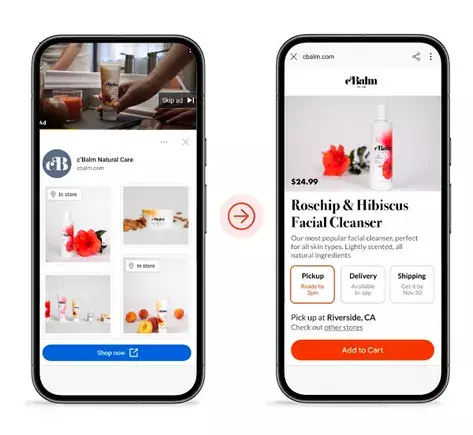In the fiercely competitive landscape of holiday marketing, standing out requires more than just traditional advertising strategies. Google’s latest innovations are reshaping how brands connect with consumers, emphasizing AI-driven insights and seamless content creation. The announcement at Google’s “Think Week” signals a shift toward smarter, more integrated advertising avenues that could redefine your approach to digital marketing. As a brand strategist, it’s imperative to understand that embracing these tools isn’t just optional—it has become essential for staying relevant and competitive during the busiest shopping season of the year.
Google’s initiative to embed ads directly within AI-generated responses exemplifies this shift. Imagine a user asking, “Why is my sink leaking after installation?” In the past, the search results might have led to separate links, potentially losing the shopper’s attention. Now, with AI Overviews offering integrated ads, your brand can appear precisely within the context of the customer’s query. While this offers a potent opportunity to insert your services or products right where the intent is high, it also demands a strategic mindset—do you want to pay for this visibility, knowing the placement isn’t guaranteed? This move indicates that Google recognizes the importance of maintaining brand presence even as users’ focus increasingly shifts toward AI summaries.
However, this development isn’t just about quick ad placements. It’s about the future, where integrating brand messaging seamlessly with AI responses becomes the norm. It compels advertisers to think about how their brand can be woven naturally into the customer journey, rather than relying solely on traditional search ads. The cost may be higher, but the potential for highly targeted exposure in a contextually relevant setting offers a new frontier of opportunity.
Harnessing AI-Driven Content Creation for Consistency and Engagement
One of the most compelling upgrades announced is Google’s enhanced Asset Studio, which leverages AI to generate product images and videos swiftly. Here, the core strength lies in the ability to produce multiple assets with minimal effort, ensuring consistency across campaigns, especially during peak shopping periods. This isn’t merely a convenience—it fundamentally transforms how brands approach content creation. Instead of relying solely on expensive photoshoots or lengthy video productions, businesses can now generate tailored visual content that aligns with their branding and marketing goals, simply by uploading a product image and providing a descriptive prompt.
This democratization of content creation is a game-changer. Smaller brands, often constrained by limited resources, can now craft professional-quality visuals that resonate with their target audiences. Meanwhile, larger companies can accelerate their campaign timelines, testing various creative angles without significant investment. The underlying advantage is control: you can ensure your core brand elements—like logos, tags, and unique product features—are preserved with accuracy, even as the AI creates diverse contextual visuals.
Furthermore, the rollout of batch content generation and text-to-video automation dramatically amplifies this capacity. Imagine producing an array of product videos in minutes for different platforms or developing a cohesive holiday campaign using AI-generated visuals and messaging variants. This streamlines the creative process without sacrificing quality, enabling brands to respond swiftly to trends or seasonal demands.
Strategic Implications of New Shoppable Ads and Sharing Tools
Another notable development is the introduction of shoppable YouTube masthead ads. By enabling direct product linking within high-visibility YouTube ad placements, Google is opening new direct-to-consumer pathways poised to capitalize on the festive shopping rush. For e-commerce brands, this represents a golden opportunity to turn awareness campaigns into immediate sales—particularly when consumers are primed for holiday buying.
Complementing this are the refreshed project sharing features, allowing teams to collaborate and review in-development ads more effectively. These tools are critical for optimizing creative strategies swiftly, ensuring campaigns are aligned with brand standards before launch. During the holiday season, when agility and precision are paramount, such capabilities can significantly elevate campaign performance and reduce time-to-market.
The overarching theme from Google’s updates emphasizes a move toward more integrated, AI-powered marketing ecosystems. While the technology offers irresistible advantages, it also prompts a critical question: Are brands prepared to adapt their creative and strategic frameworks accordingly? Success in this new landscape will depend on a brand’s ability to leverage these tools intelligently, balancing automation with human oversight to maintain authenticity and brand integrity.
Google’s new ad innovations mark a decisive step toward a future where AI seamlessly integrates with marketing strategies, empowering brands to reach consumers more effectively than ever before. If approached strategically, these tools could redefine how you execute your holiday campaigns, turning technological evolution into a competitive advantage—if only you’re willing to critically reimagine your approach and harness their full potential.

